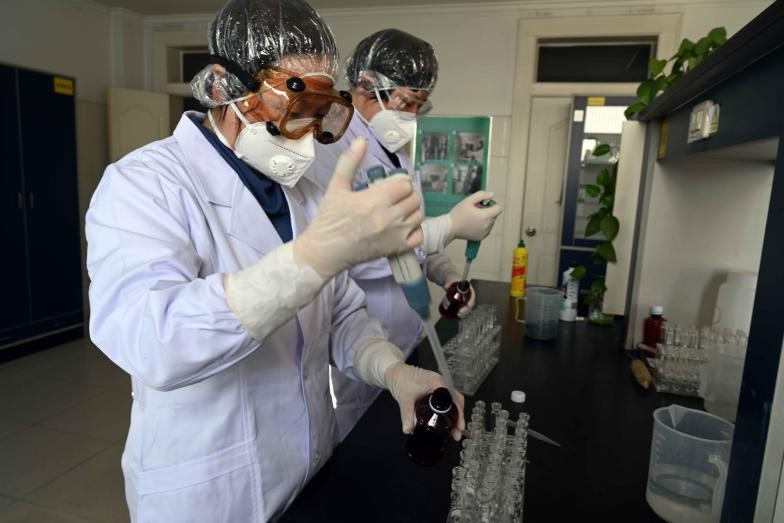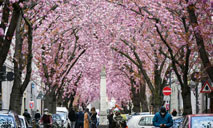Reclaimed water takes up 30 percent of Beijing's annual water supply (3)
 |
| Employees of a water reclamation plant in Gaobeidian, Beijing check water quality, Feb. 10, 2020. (People's Daily Online/Deng Jia) |
As Beijing enhances its efforts on sewage disposal and raises relevant standards, it is also expanding the usages and consumption of reclaimed water. At present, reclaimed water accounts for nearly 30 percent of the capital's total annual water supply, becoming an indispensable resource of water supply.
Xiaohongmen Water Reclamation Plant is a modern plant under Beijing Drainage Group Co., Ltd. It receives domestic sewage from the western and southern parts of Beijing and transforms it into water that meets the standards for class IV groundwater after 12 purifying procedures. The reclaimed water is then pumped into the Yongding River, the mother river of Beijing, through a 33.4-kilometer tube.
Before getting into the Yongding River, the reclaimed water has to flow across a piece of wetland to further degrade the nitrogen and phosphorus it carries. By the time when it enters the mother river, it has met the standards for class III groundwater.
This is a typical scenario that showcases Beijing's efforts to turn sewage into resources. According to the Beijing Water Authority, the city reclaimed 120 million cubic meters of water last year.
The average annual precipitation of Beijing over the years stands at 585 mm, and the average annual available water resource is 3.74 billion cubic meters. The city's per capita annual available water resource is less than 200 cubic meters. It once had to over exploit its underground water to maintain water supply due to continuous drought.
"In the past a dozen of years, Beijing's underground water level was dropping one millimeter each year, and every drop meant a storage reduction of 500 cubic meters ," said Liao Ping'an, an official with the Beijing Water Authority.
To alleviate the situation, the exploitation of reclaimed water, rainfalls and other unconventional water resources was put onto the capital's agenda.
In 2013, the municipal government of Beijing proposed to build 47 water reclamation plants in three years. After that, a sewage treatment plant in Beijing's Gaobeidian was transformed into a water reclamation plant. Now the plant reclaims around a million tonnes of water on a daily basis.
Since 2013, the city has requested all of its newly built water reclamation plants and those transformed from sewage treatment plants to have their water meet the standards for class IV groundwater.
As of the end of 2020, Beijing had a total of 67 major sewage treatment plants and water reclamation plants that could treat a million tonnes of water each every day. Their total daily capacity added up to nearly 6.8 million cubic meters, with a reclamation rate of 95 percent.
 |
Photos
Related Stories
- Water projects help improve water supplies in village of NW China's Ningxia
- 50 years of pioneering mainland-HK water supply
- South-north water transfer project starts to supply water to Beijing
- China to boost water conservation
- Water supply resumes in E China city
- Water supply resumes in E China city
- E China city suspends water supply over suspected pollution
- Floods cut town's water supply in S China
- Pollution disrupts water supply of 50,000 residents
- Shrinkage of Poyang Lake threatens water supply
Copyright © 2021 People's Daily Online. All Rights Reserved.










